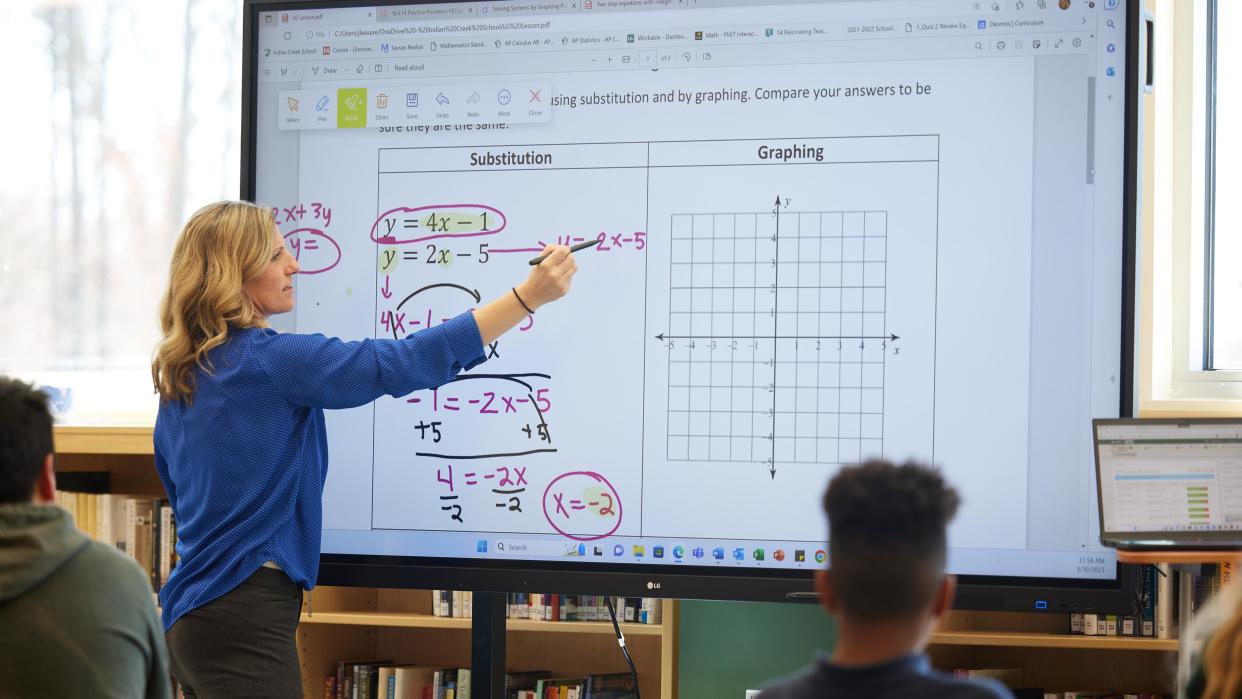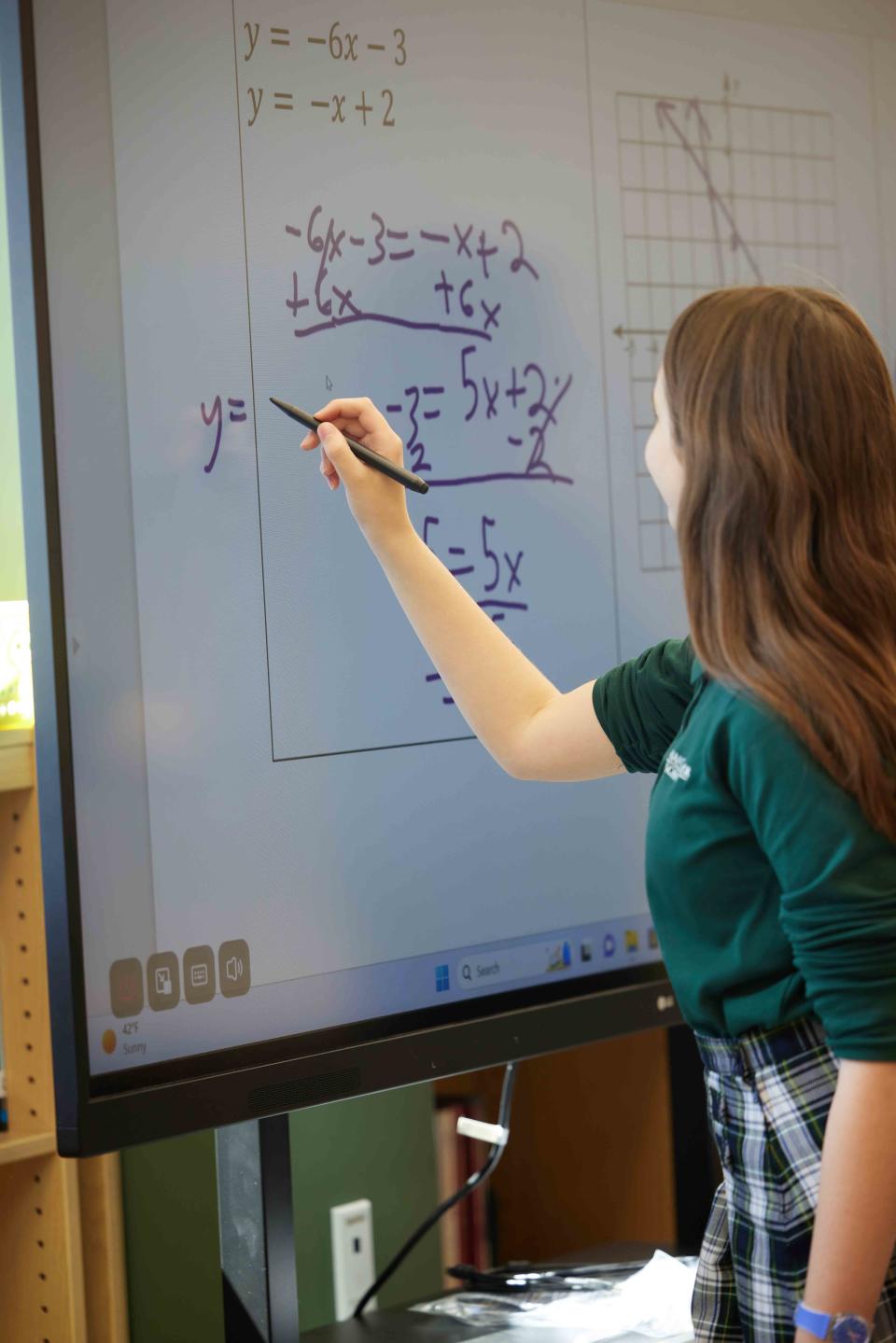It's Complicated: How Integrators Balance Classroom Technology and Usability


Advances in technology have made it easier to encourage collaboration in various settings, including K-12 and higher education. With educators navigating the day-to-day challenges surrounding student engagement, many schools rely on advanced classroom technology to enhance their academic offerings. But this is often easier said than done.

Many schools are unsure of what they really need; they require assistance finding intuitive or easy solutions. Without the correct guidance, an institution ends up with technology collecting cobwebs rather than engaging with students.
"Some teachers are afraid of using new technology and let investments sit underutilized as a result," said Victoria Sanville, education account lead at LG Business Solutions USA. "LG is helping to minimize in-classroom challenges by offering intuitive, easy-to-use, and familiar technologies to reduce the learning curve and encourage long-term use."
Out with the Old
LG recently partnered with Indian Creek School, a private Pre-K-12 school in Crownsville, MD, to integrate a dozen of its LG CreateBoards (intuitive multi-touch display boards) for the 2022-23 school year, providing the school increased flexibility while also enhancing lesson planning capabilities. The CreateBoards were different from the school's previous smartboard displays, which the faculty found overly complicated and too challenging to perform essential functions within the classroom.

The process to replace them was lengthy, with the school's director of educational technology, Sara White, observing several classes to better understand how the teachers used the boards and their needs. "I polled all the teachers and had them rate what features were most important to them for any new classroom tools," White recalled. "We then began to bring in test boards of assorted brands. Each one would remain in my office for a few weeks, and I had lots of time when teachers could come try out the boards and give feedback. This was a crucial step."
[Editorial: How Much Time Do You Waste with Technology?]
With the previous smartboards, White said it felt as if the teachers had been equipped with a chef's kitchen "when they only wanted to make mac-n-cheese. Teachers weren't cooking up sophisticated lessons because the technology required overly complicated setup, so the boards simply weren't serving the purpose we intended. We were paying for features and software that were never used."
Encourage Engagement
The LG CreateBoard allows teachers to connect wirelessly to the boards, enabling them to augment their lessons with videos and presentations or share content directly from their devices. "The teachers are no longer tethered to the front of the room," said White. "They can sit with the students during class, walk around the room giving help, or sit at the back of the class to ensure all are staying on task."
Students can also engage directly with the technology by writing on the board simultaneously, or those in 6th grade and up at the school can share work from their own devices. The school provides students access to software tools like Adobe Creative Cloud and 3D modeling software, allowing them to engage in creative lessons like creating advertising pitches, coding video games, or working on projects in Adobe Photoshop. Once students have completed their projects, the CreateBoard allows them to share them wirelessly for in-classroom presentations.

"Our math students can use the pens to write on the problems together [up to 20 students can write at the same time], our English students can annotate or critique a writing on the board, or our first graders can practice their handwriting on the boards," said White. "The whiteboards also have fantastic onboard tools like geometric shapes and sports field templates for coaches."
Beyond the classroom, the school purchased digital boards to be used on mobile carts, including 10, 75-inch models that multiple classrooms can use, one 75-inch model for messaging in the cafeteria, and an 86-inch model in the library, which the school plans to upgrade with an upcoming 98-inch model. The technology has applications in various disciplines, and the school uses the CreateBoard with a low-height stand for younger, smaller students to engage in handwriting exercises and reading.
The school currently does not have CreateBoards in every classroom, but White said teachers are literally begging for them. "We hope to buy more in the future, but that depends on our budget. Our math, history, and language teachers are heavy users of the new boards, and having one in every classroom would be ideal," she added. The school views LG as a partner in helping them to expand on their "classrooms of the future" and looking to incorporate increased technology that encourages innovation, creativity, and creating a better learning experience for their students.
Emphasize the Interface
For every story like Indian Creek, plenty of integrations don't go as smoothly, and many things can hinder the technology from being impactful. Some schools purchase screens that are too small or dimly lit, making it complicated for students to stay focused and engaged during lessons.
"I remember being a kid in school [K-12] and trying to look at the projection screen and getting very frustrated," said Matt Goff, business development manager with IES Communications. "I wanted to pay attention and learn, but in many classes I would be unable to see the screen since it was vastly undersized or not bright enough, so I’d literally just stop paying attention."
With most technology upgrades centering around improving the visual learning experience, it is ideal for schools to become better educated on what types of technology are available—not just getting something to say you have it. Integrating larger screens with optimal brightness and resolution is critical to ensuring students don't check out on the day's lesson.

A consistent and straightforward user interface is also crucial to make sure educators don't get frustrated and disengage with the technology. For example, when the University of Central Florida implemented its most recent user interface throughout its campus, it was designed to mimic an iPhone. "Right now, intuitive means as consistent an experience they get on a mobile device or some other product that they are already used to and bringing that type of experience or mindset into our enterprise systems," explained Don Merritt, director of the office of instructional resources at UCF and president of Educational Technology Collaborative (ETC).
However, AV professionals collaborating with schools must be careful when making user interface recommendations and consider what "intuitive" means for the user. "Sometimes we don't adequately put ourselves into that user experience," added Merritt. "So, we come in, and we're like, we know exactly what that means, but a faculty member comes in and says, 'I have no idea what this means.'"
Focus on Outcomes

Standardization in all classrooms is also vital, ensuring faculty can optimize the technology anywhere they go on campus. "If you have 100 rooms that are all the same, then it is much easier to support and maintain them," explained Adam Tozer, senior systems engineer and practice lead of classroom and production technology with Calvin University. "If they are all different with custom programs, then it is much more time consuming to support those spaces. Rooms can have variations in displays and layout, but the programming behind that can be done in a way to make a single system/interface work in multiple applications."
Many schools spend minimal time planning their AV requirements, often agreeing to an AV installation without giving it the proper thought it deserves. Ultimately, this frustrates the stakeholder with wasted money and resources on a system not best suited to their needs.

"They should be focused on the outcomes they expect to receive and then work backwards from there," Goff noted. "The school needs to consider what are the goals they’re trying to accomplish from putting in this new AV system. Many are not focused on the real-world outcome, such as providing an easier environment for students to learn within. They’re just focused on the tech without a purpose, or they’re checking a box."
[Here's How Extron Helps Classrooms with Pro AV Problems Help Themselves]
Of course, many issues can be avoided by working with a reputable consultant or integrator to follow the proper steps in planning out the system and selecting the right technology to support the school's needs now and in the future. Even when working with AV experts, schools should be educating themselves as well. Knowledge can provide these institutions with the power to integrate technology that puts them at the top of the class.

